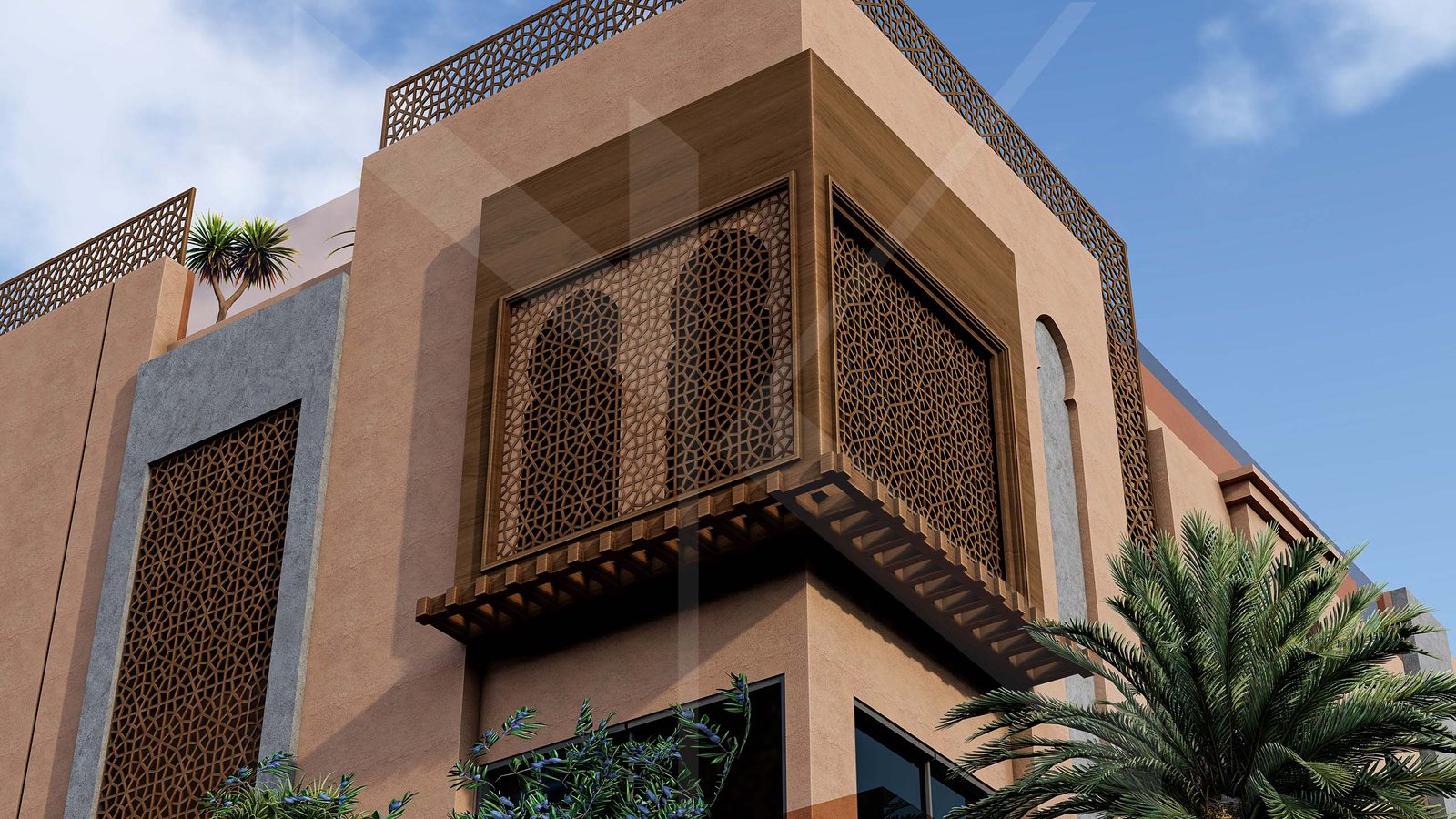Moroccan Villa - Faisal A.
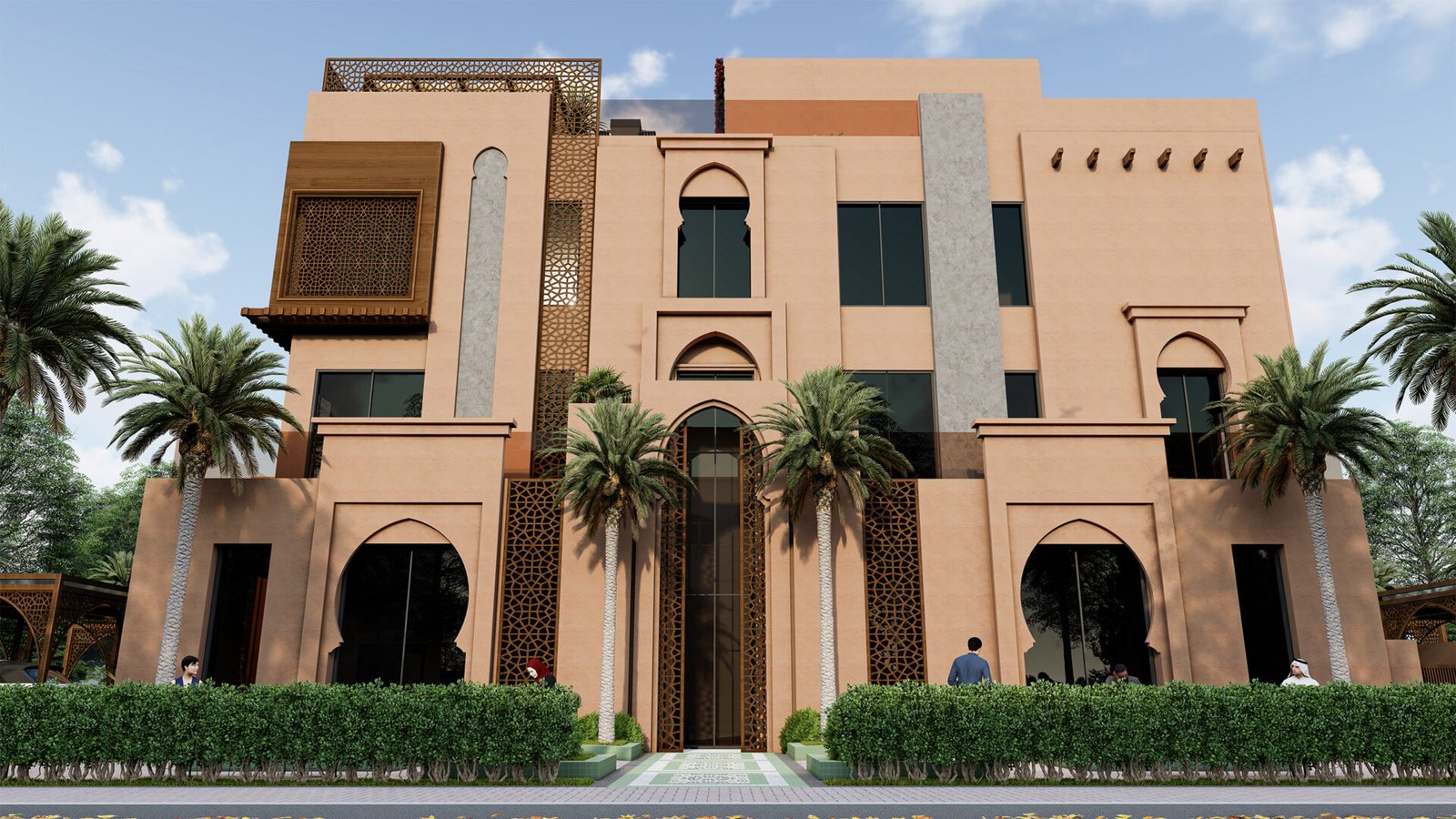
Moroccan architecture refers to the architecture characteristic of Morocco throughout its history and up to modern times. We can see many different architectural designs but the strongest influence throughout is Islam where the décor and building guidelines have been influenced, followed and have directed the construction and decoration of the buildings in many parts of Morocco for centuries.

Many doorways, street fountains, and entrances are also highlighted with sculpted wood canopies which were characteristic of Moroccan and Moorish architecture.Especially from the Marinid period onward, sculpted wood became a major component of architectural decoration.
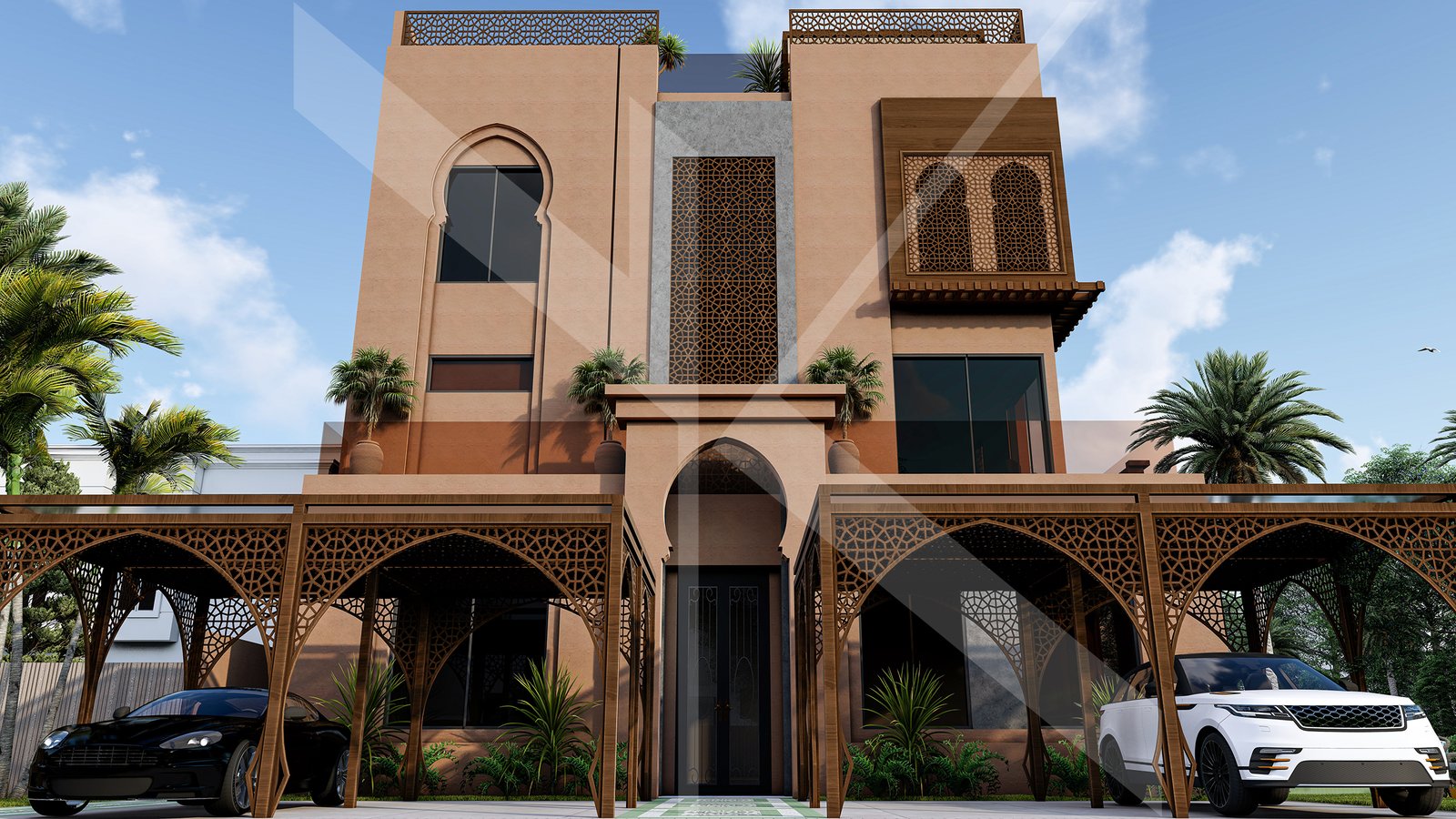
Horseshoe arch
Perhaps the most characteristic arch type of Moroccan and western Islamic architecture generally is the so-called "Moorish" or "horseshoe" arch. This is an arch where the curves of the arch continue downward past the horizontal middle axis of the circle and begin to curve towards each other, rather than just being semi-circular (forming half a circle only).
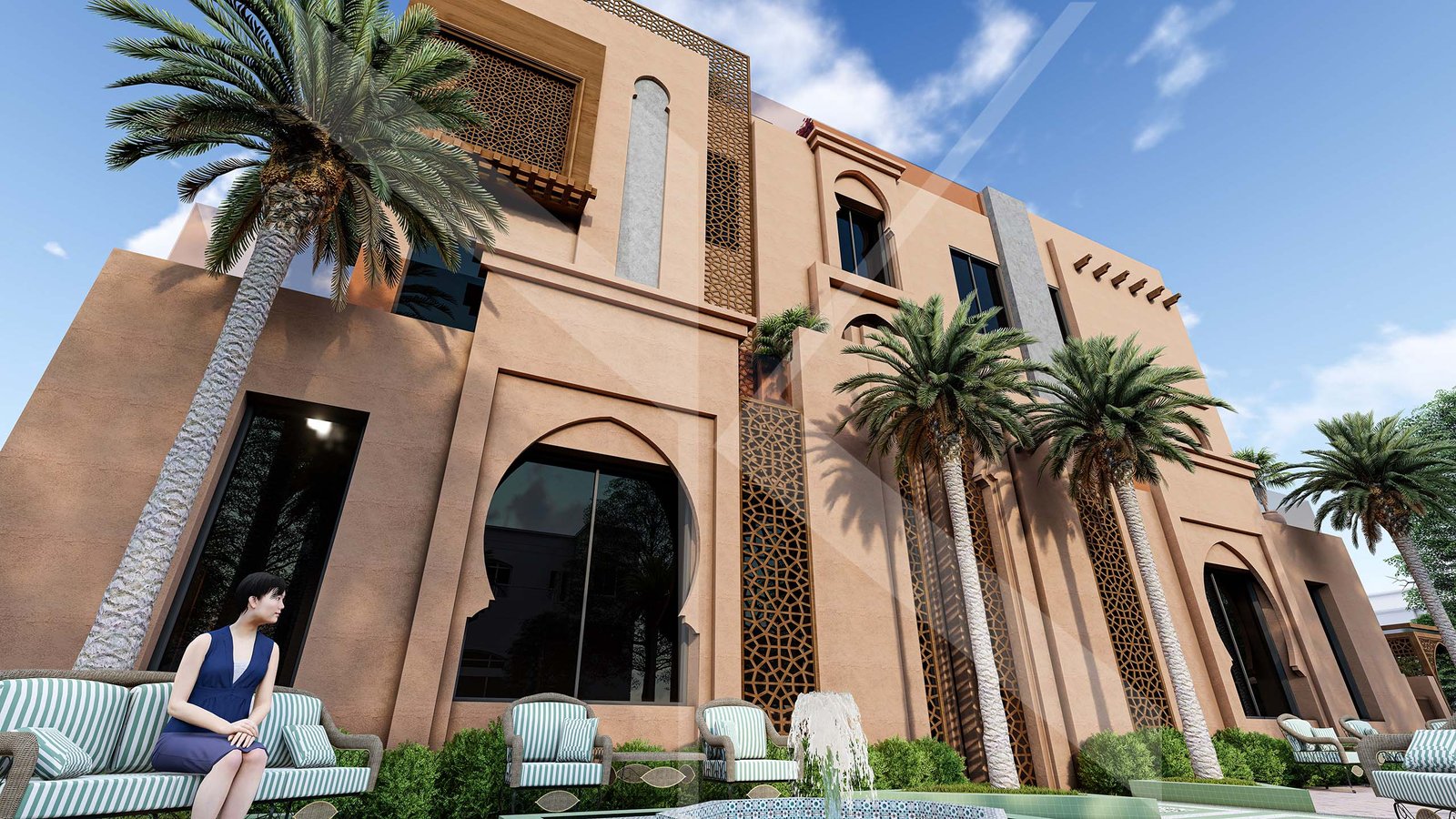
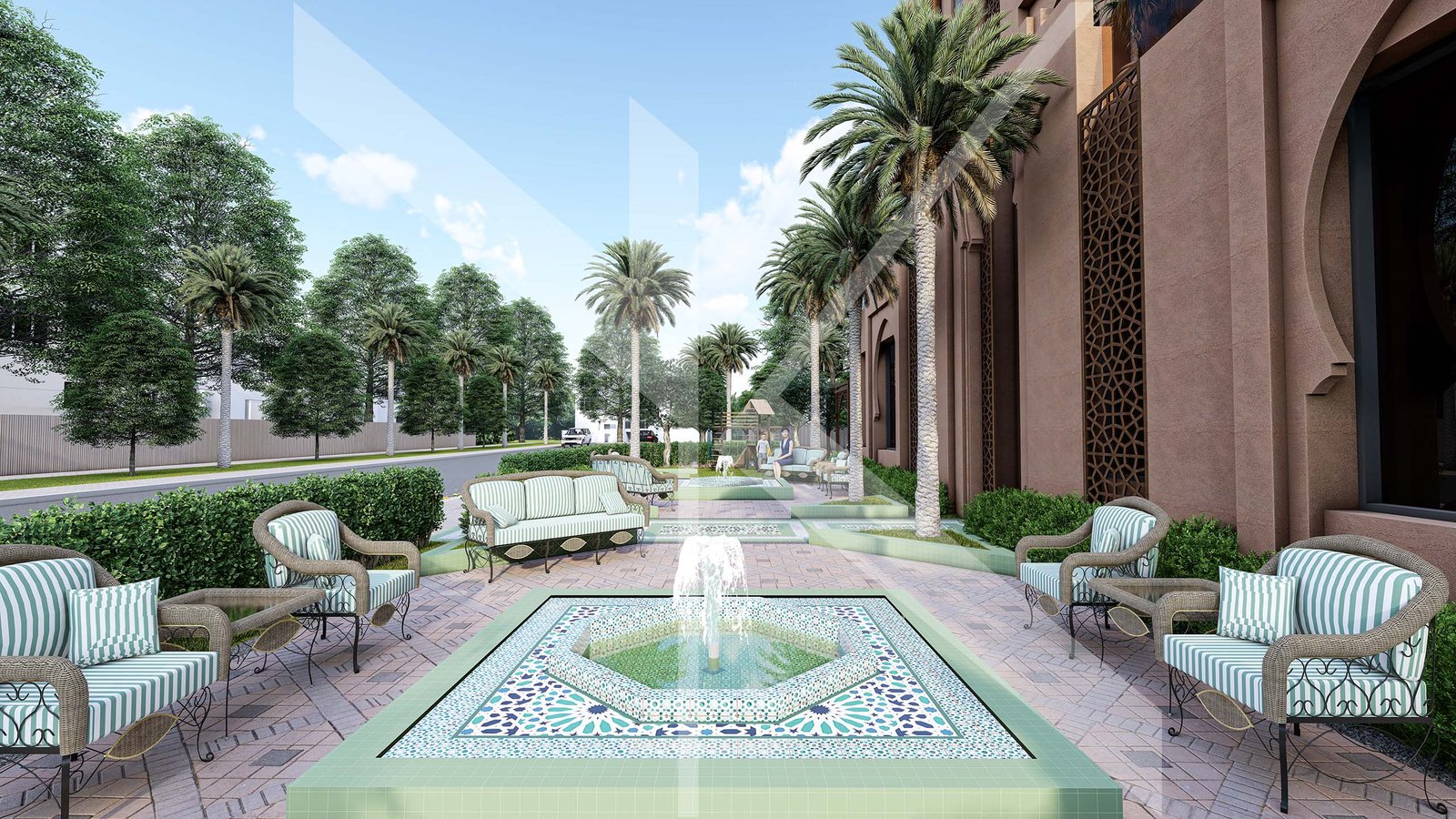
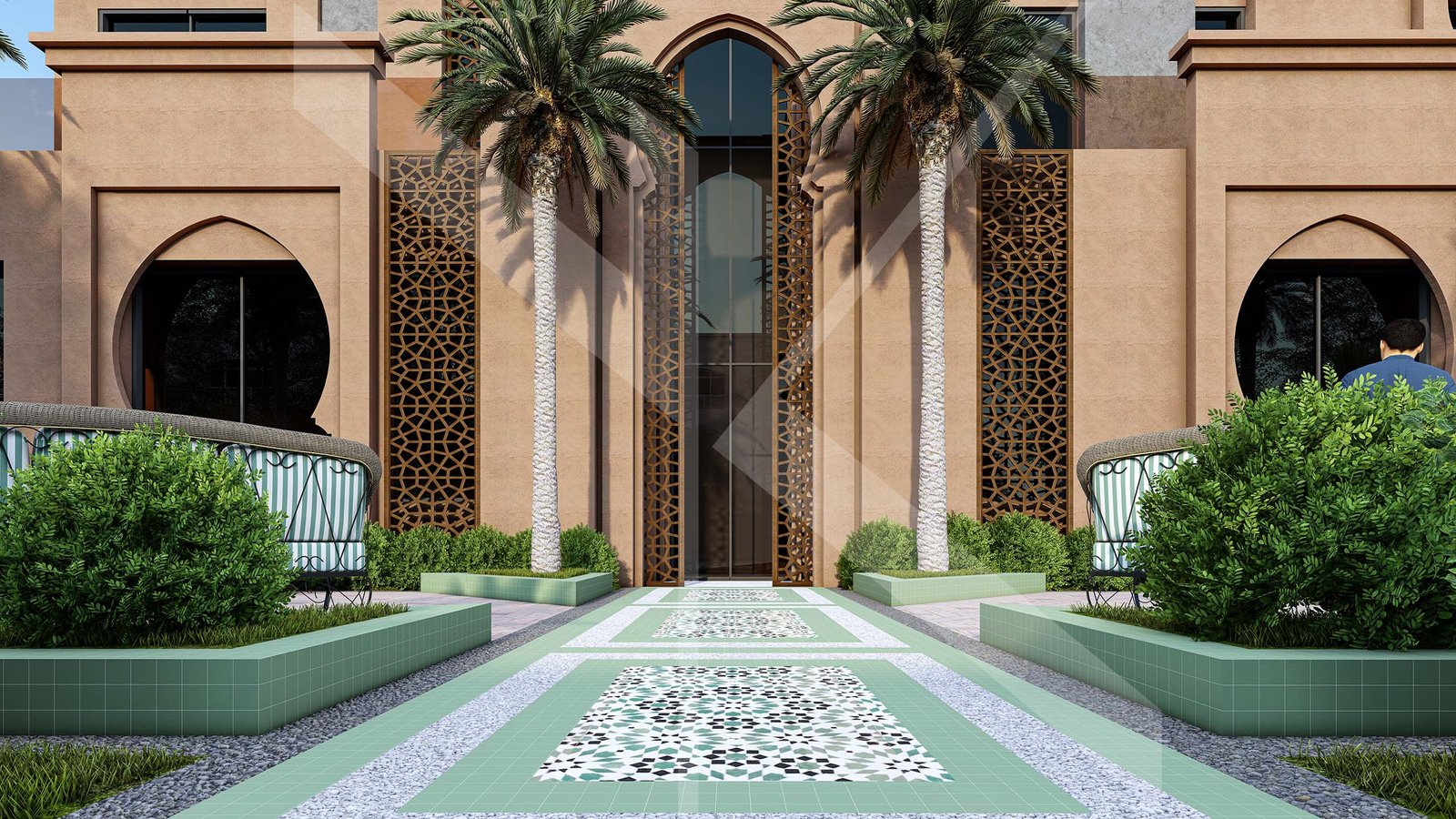
Geometric patterns
Geometric patterns, most typically making use of intersecting straight lines which are rotated to form a radiating star-like pattern, were common in Islamic architecture generally and across Moroccan architecture. These are found in carved stucco and wood decoration, and most notably in zellij mosaic tilework. Other polygon motifs are also found, often in combination with arabesques.
A mashrabiya or mashrabiyya (Arabic: مشربية) is an architectural element which is characteristic of traditional architecture in the Islamic world and beyond. It is a type of projecting oriel window enclosed with carved wood latticework located on the upper floors of a building, sometimes enhanced with stained glass. It was traditionally used to catch wind and for passive cooling. Jars and basins of water could be placed in it to cause evaporative cooling. It is most commonly used on the street side of the building; however, it may also be used internally on the sahn (courtyard) side.
The term mashrabiya is sometimes used of similar lattices elsewhere, for instance in a takhtabush.
